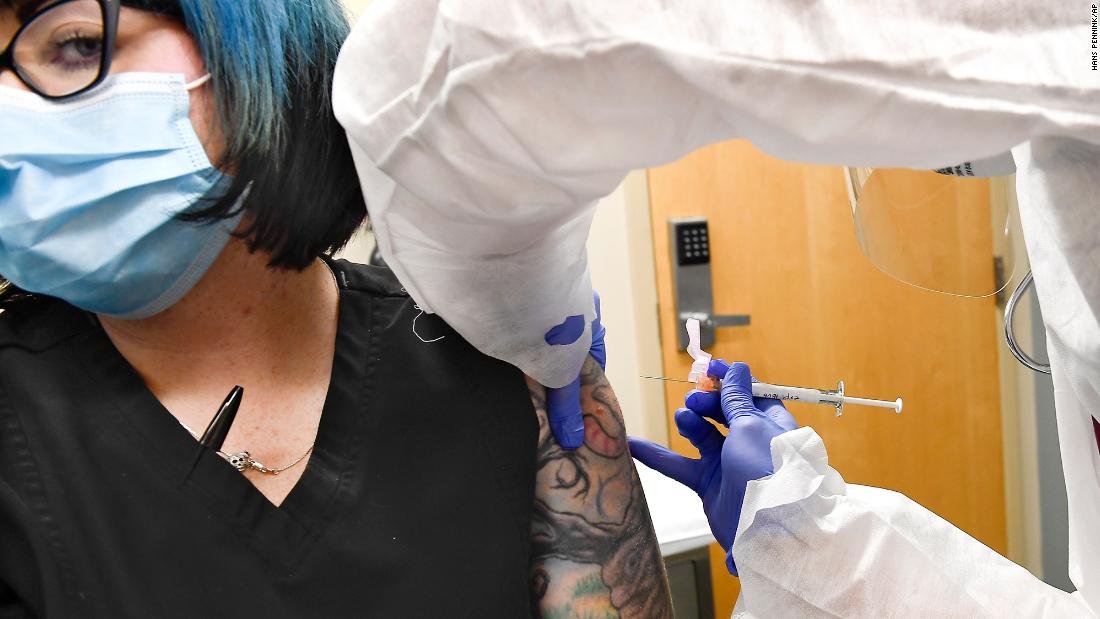
Here's what you need to know about them.
These are among the dozens of Covid-19 vaccines in trials around the world as researchers rush to find a way to stop the pandemic.
To help speed the process, the US government's Operation Warp Speed is providing some funding for those three and five others -- vaccine candidates the US Department of Health and Human Services calls "the most promising."
Operation Warp Speed's goal is to have 300 million doses of a vaccine that's safe and effective by January 2021.
While the Phase 1 trial results are promising, the proof will be in the results of the final, large Phase 3 trials. If a vaccine candidate makes it through that, it will go to the US Food and Drug Administration for approval.
Phase 1 trials involve testing the vaccine in a small group of people to see if it's safe and if it's effective. Phase 2 trials involve a larger group and often involve various potential doses. Phase 3 trials are a final stage before seeking approval and look for safety, efficacy and optimal dosing. For coronavirus, they are all scheduled to involve 30,000 people.
Where is it now? The start of Moderna's Phase 3 trial of its mRNA-1273 vaccine was announced just last week. It will involve 30,000 adults at 89 clinical research sites around the country. It is the first Phase 3 trial begun under Operation Warp Speed, according to the National Institutes of Health.
Phase 2 was started in May.
Trial results: So far, only Phase 1 results have been released. Those early results showed the vaccine brought about an immune response, which is what researchers wanted to see. The higher the dose, the higher the immune response was in the people who got it.
How safe is it? More than half of participants had side effects, including fatigue, chills, headache, muscle pain and pain at the injection site. These are considered normal side effects for a vaccine. The higher the dose, the worse the side effects. The Phase 3 trial will use the middle dose.
Who is developing it? Moderna, a biotech based in Cambridge, Massachusetts, developed the vaccine with help from the National Institute of Allergy and Infectious Diseases, part of the US National Institutes of Health.
Where is it now? Pfizer has more than one vaccine candidate, being developed together with the German company BioNTech. It has moved into a combined Phase 2/3 trial, also started last week, with one of them, BNT162b2. That's being carried out at about 120 sites worldwide, including 39 US states and Argentina, Brazil and Germany.
When will we have it? If the trial is successful, Pfizer and BioNTech have said they are on track to seek regulatory review as early as October. If it gets emergency authorization from the FDA, as many as 100 million doses may be available by the end of the year, and about 1.3 billion by the end of 2021.
The US Department of Health and Human Services and Department of Defense last month announced a $1.95 billion agreement with Pfizer to produce 100 million doses of the vaccine. The deal also allows the US government to acquire an additional 500 million doses.
Trial results: In the combined Phase 1/2 trial, both vaccines brought about an immune response and produced antibodies, a "double-arm" approach that the companies hope will be more effective and provide longer protection. So far, only one has moved on to more advanced trials. Almost 120 people participated.
How safe is it? Preliminary data from the Phase 1/2 trial showed "a favorable overall tolerability profile" for the vaccine, Pfizer said in a news release, "with generally mild to moderate" side effects that lasted one to two days, "such as fever, fatigue and chills and no serious adverse events."
Where is it now? Maryland-based biotech Novavax hopes to have its vaccine in Phase 3 trials next month.
Trial results: Novavax released data from its Phase 1 trial Tuesday involving 131 participants. After two doses of the vaccine, participants had levels of antibodies that can fight off the virus that were four times higher, on average, than those developed by people who have recovered from Covid-19.
The vaccine also brought about a response by immune cells, according to an analysis of 16 randomly selected volunteers.
How safe is it? Of the 106 people who got the vaccine, and not a placebo, five had severe side effects, including muscle pain, nausea and joint pain, and one had a mild fever. The side effects lasted two days or less, on average.
"here" - Google News
August 06, 2020 at 11:57AM
https://ift.tt/2EWBPRi
These 3 Covid-19 vaccines have been in the news. Here's what you need to know about them - CNN
"here" - Google News
https://ift.tt/2z7PfXP
https://ift.tt/2Yv8ZPx
No comments:
Post a Comment